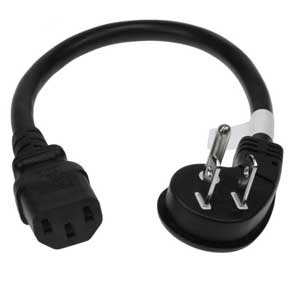Know About the NEMA Ratings That Electrical Enclosures Must Go By
If you thought that the NEMA ratings are just meant for NEMA power cords, you might be wrong. The NEMA association also has ratings for electrical enclosures. Electrical enclosures are nothing but the cabinets or boxes in which we mount switches and knobs for the electrical products to work right. Through these ratings, you can define the type of environment in which electrical enclosures can withstand themselves.

NEMA undertakes strict testing requirements to check if the enclosure is protective against dust, oil immersion, water, external ice etc. All the NEMA ratings come with different specifications and these ratings help to protect property, personnel as well as electrical components from damage.
The Significance of NEMA Ratings
Just like you check your NEMA power cable with its ratings, it is important for you to check the ratings of the enclosure before mounting it. And why is it important? Well, there are 3 important reasons behind it.
1. These ratings enable the users to decide if the enclosures are safe, compatible, and reach up to the functioning standards.
3. If you go through application guides and other technical papers, you will find 600 standards that will provide you with insights about functionality and product safety of enclosures.
Certification of Enclosures under NEMA Ratings
The National Electrical Manufacturers Association comes up with enclosure standards and publishes it. However, it does not mean it checks products or works with any testing laboratories. Let’s take an example of a NEMA certified product.
If the manufacturer creates a cord, it is voluntary for him to follow NEMA standards. Some manufacturers also go with third party certifications. But if a cord reads itself as “NEMA cord,” it means it follows the NEMA standards. Although NEMA does not test the products, it provides with the list of testing laboratories that offer the testing services.
Take a look at the types of NEMA enclosures:
NEMA Type 1
NEMA 1 enclosure needs minimum amount of protection and keeps prevented against dangerous parts. It also offers some amount of protection against other alien objects like dust and dirt. The indoor applications of these enclosures include junctions, switches, utility boxes etc.
This type is used majorly for outdoor and indoor for protecting the personnel against dangerous parts. Its rating offers protection against falling dirt as well as dust. The Type 3 rating is depictive of the fact that the enclosure is rain, dust and sleet tight. Also, that ice-formation on its exterior will not affect it.
You can utilize enclosures having these ratings in the same surroundings as mentioned above. They offer protection against dangerous parts and can withstand snow, rain, windblown snow particles as well as ice formation. Mostly, you can use them in utility boxes, meter cabinets and filtered fans.
These enclosures are used for industrial applications like operator consoles, wiring enclosures as well as hydraulic. They are watertight and offer protection from snow, ice formation, splashing from water, sleet etc. To stop the contaminants from entering the unit, it is important for these enclosures to use a closed loop cooling system.
Just like the specification of NEMA Type 4, Type 4X provides a great protection against corrosion. You can find these enclosures in marine environments, food processing industries, paper manufacturing units and water treatment plants. Based on the environment’s temperature, it is okay to use air heat exchangers and conditioners for this type.
Be it enclosures or NEMA power cords, it is advisable to go for certified products as they can prevent several accidents and mishaps from happening. You can find these products from online vendors at good prices.



Comments
Post a Comment